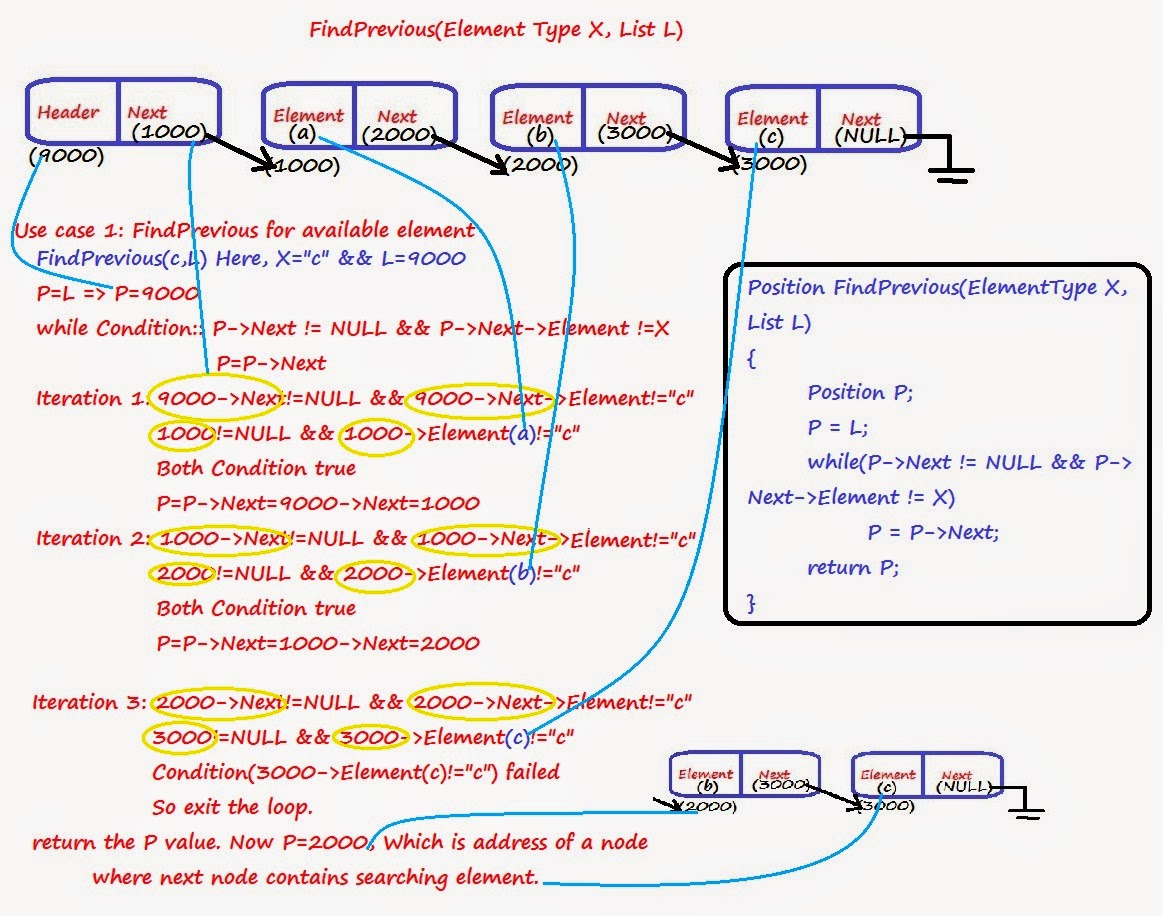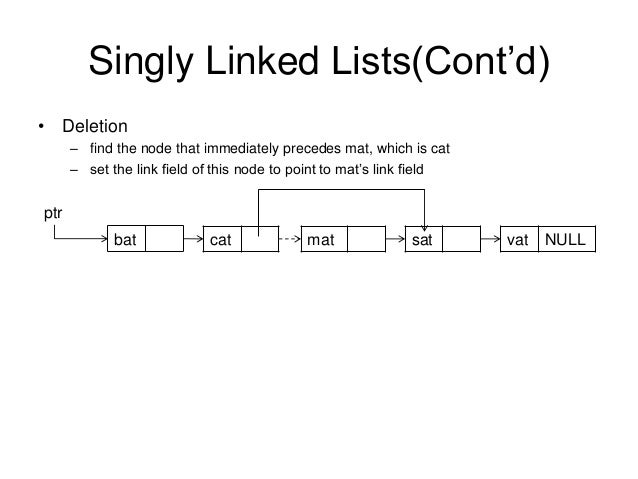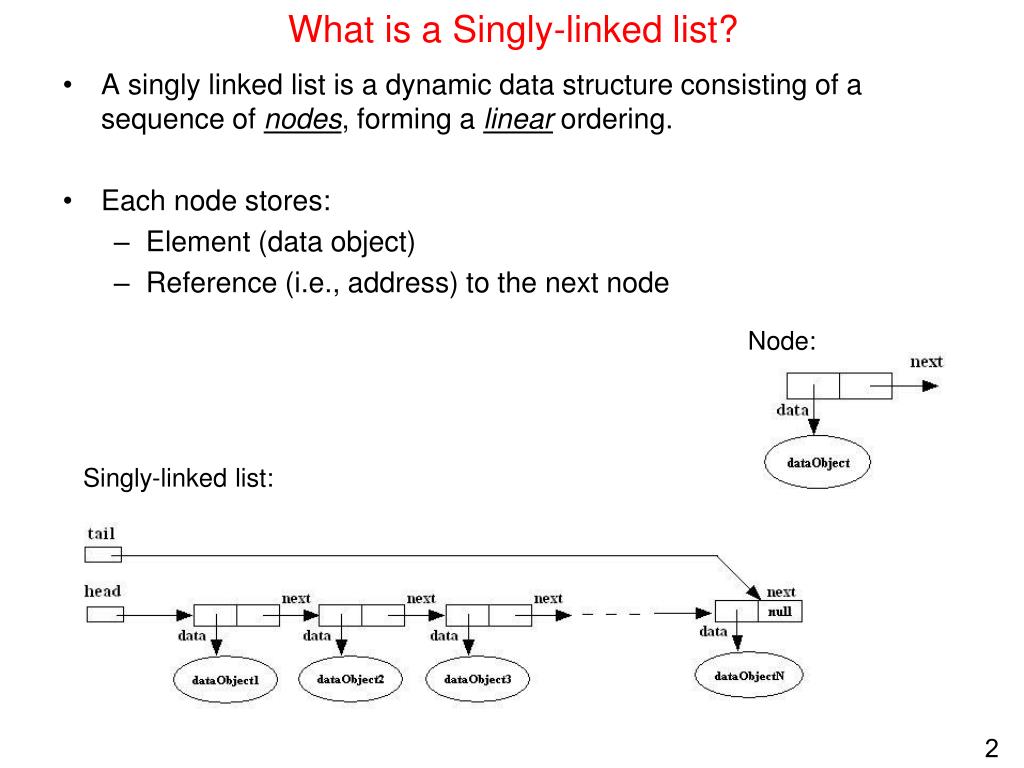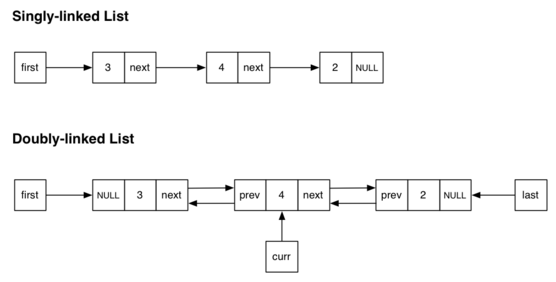

- #SINGLY LINKED LIST PLUS#
- #SINGLY LINKED LIST SERIES#
★ As linked list consists of nodes, we need to declare a structure which defines a single node. Reference Implementation of Linked List Declarations In reality, the Nodes may be scattered around various parts of memory. ★ The Figure below depicts the Nodes in the linked list as being very close to each other, neatly arranged in a row. This is usually how the end of a linked list is signified - by letting the last Node point to NULL. 
★ Because the fourth Node is the last one in the list, it points to the NULL address.★ Each Node, in turn, points to the next Node in the list.The head simply points to the first node in the list. A good algorithm usually comes together with a set of good data structures that allow the algorithm to manipulate the data efficiently.
#SINGLY LINKED LIST PLUS#
★ The following figure has four Nodes, plus a pointer known as the list head. The pointer contains the address of the next node.Ī Node with Data Memember and Pointer Data Members Doubly Linked Lists: This type of linked list stores all the information of the Singly Linked Lists. ★ In addition to the data, each node contains a pointer, which can point to another node. The reference stored in the last node of the list is NULL. ★ The Nodes stored in a Linked List can be anything from primitives types such as integers to more complex types like instances of classes. ★ Each node in a linked list contains one or more members that represent data. Linked List can be defined as collection of objects called nodes that are randomly stored in the memory. ★ Each node is consists of two fields: Data and Pointer. 
★ The elements of a linked list are called the Nodes.★ Linked lists are among the simplest and most common data structures.They can be used to implement other common abstract data types, including lists, stacks, queues, and so on.The program deletes the node containning that data. ★ If a particular piece of data needs to be removed from the linked list,.★ If new data need to be added to a linked list, the program simply allocates another node and inserts it into the series.The nodes in a linked list are dynamically allocated. ★ A linked list can grow or shrink in size as the program runs.
#SINGLY LINKED LIST SERIES#
★ A linked list is a series of connected nodes, where. When the Nodes are connected with only the next pointer the list is called Singly Linke List. The LinkedList class we eventually build will be a list of Nodes.Introduction to the Linked List ADT Linked List is an Abstract Data Type (ADT) that holds a collection of Nodes, the nodesĬan be accessed in a sequential way. Python singly linked list example 🔗 Node Class 🔗įirst, we’ll build a Node class. From there, we can find the next item and so on down the list. We need to examine the first element’s next pointer to see where the next item is, then we can navigate to it. While regular lists like arrays and slices use a contiguous memory block to store references to their data linked lists store references or pointers as part of each element.Ī normal list is just a pointer to the first element in the list, and a specific item can be retrieved by providing a memory offset.Ī linked list is also just a pointer to the first element in the list, but memory offsets won’t do us any good. Linked lists stand apart from lists in how they store elements in memory. Like arrays or traditional lists, linked lists are an ordered collection of objects. 
Unlike and array, elements in a linked list use pointers or references to each other to keep the list intact. A linked list is a linear data structure where elements are not stored next to each other in memory.








 0 kommentar(er)
0 kommentar(er)
